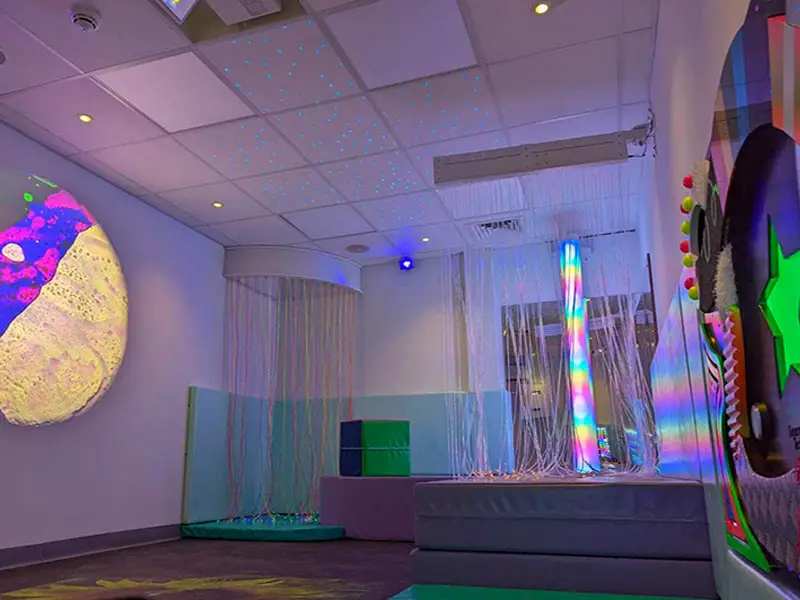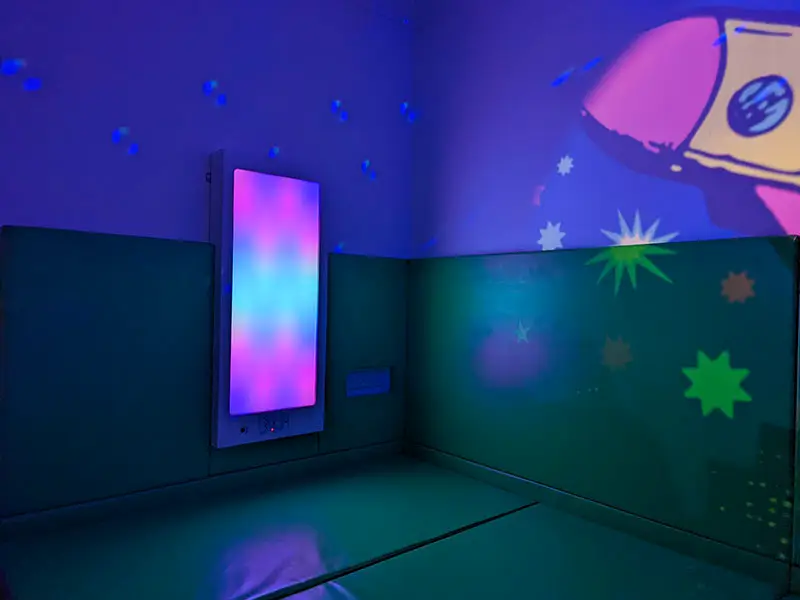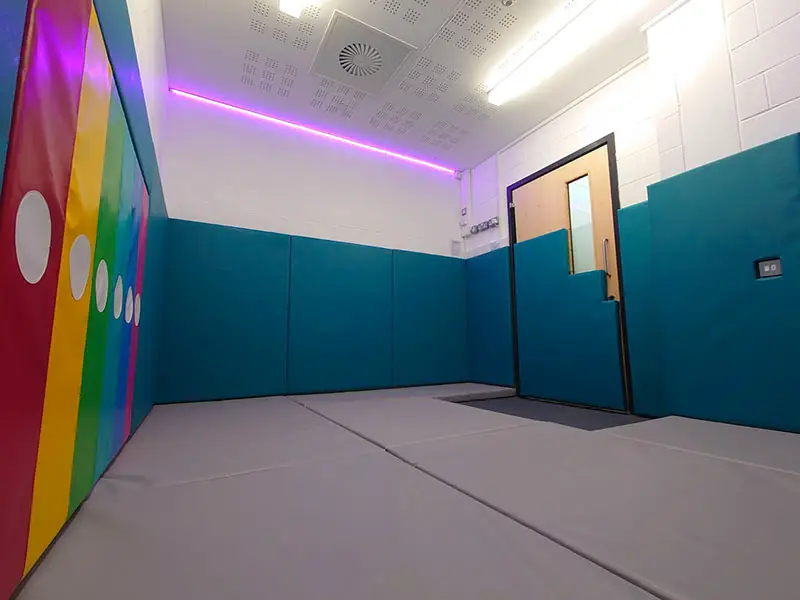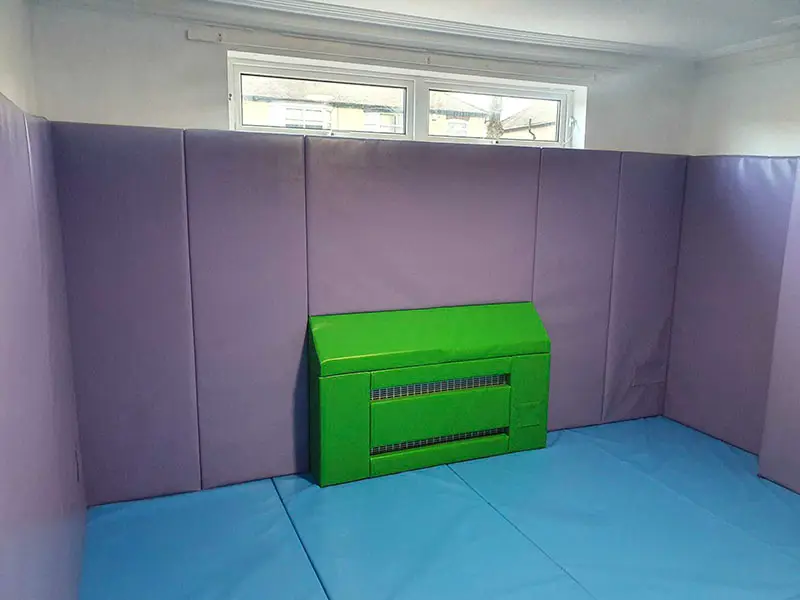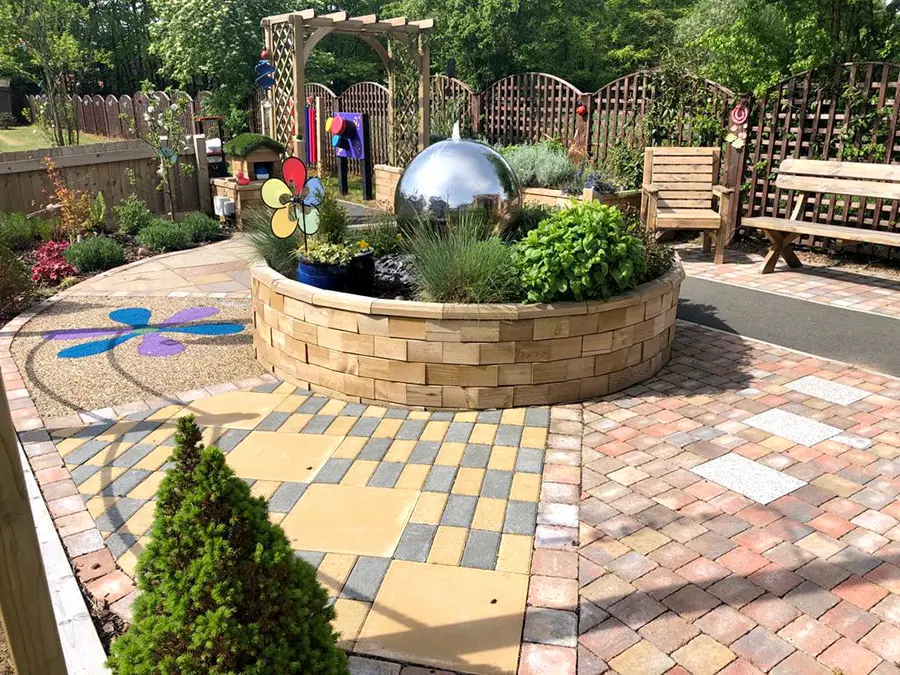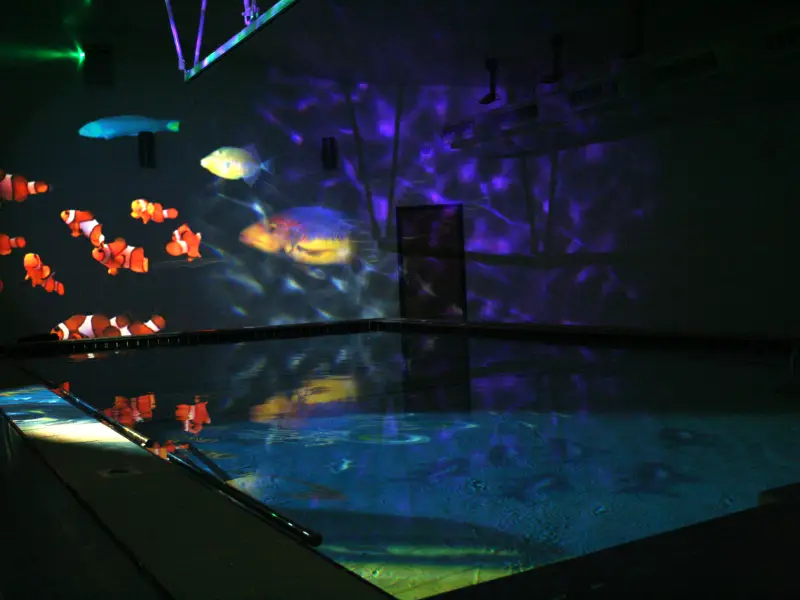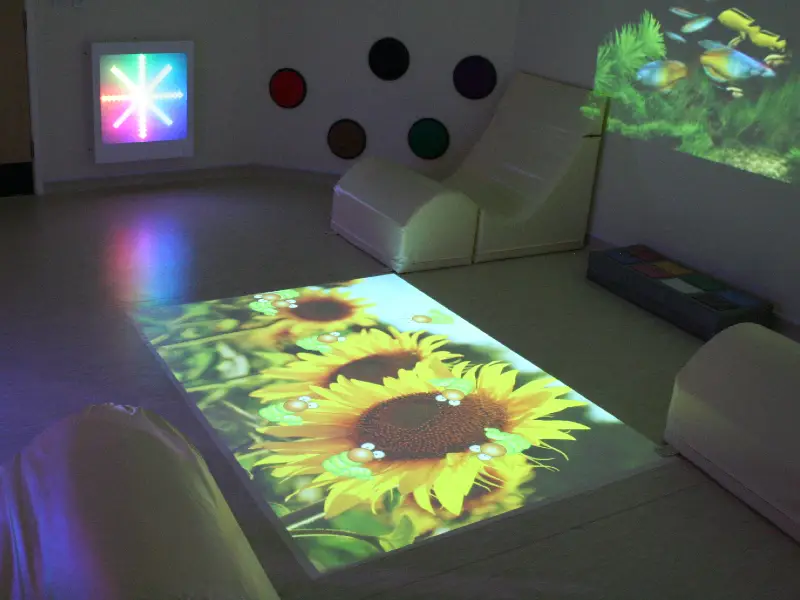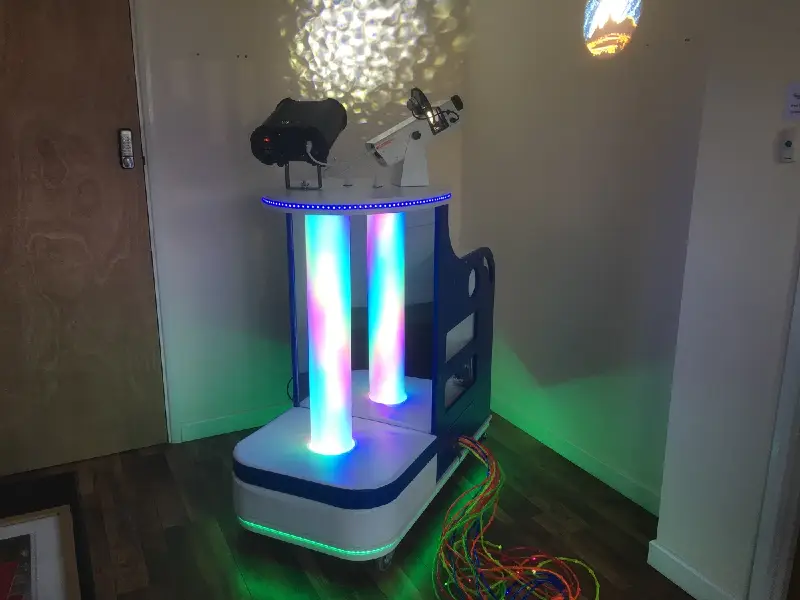Social Care Sensory Rooms
Sensory rooms are transformative spaces in the social care sector, offering tailored environments to support vulnerable individuals. From care homes to day centres and supported living environments, sensory rooms are designed to enhance quality of life, promote emotional well-being, and support behavioural management.
How We Work
Design
We will work with you to design the perfect Sensory Environments to meet your needs and budget.
Installation
Our team of experienced engineers will install your system to the Highest Standards.
Training
We include full operational training on how to get the most from your new Sensory Space.
Support
Unrivalled Aftercare Support – Protecting your investment with our maintenance packages.
Applications of Sensory Rooms in Social Care
Sensory rooms can be adapted to suit various social care settings, each serving a specific purpose in improving care delivery and user experiences.
Care Homes
In care homes, sensory rooms are invaluable for residents with dementia or physical limitations. These spaces provide:
- Calming Environments: Residents can escape from overstimulation or high-stress areas.
- Memory Stimulation: Features like familiar scents or visual projections can help evoke positive memories and improve cognitive engagement.
- Social Interaction: Group activities in the sensory room encourage bonding and communication among residents.
Day Centres
For attendees of day centres, sensory rooms offer a space to explore, engage, and relax. They can be used for:
- Interactive Experiences: Bubble tubes, tactile panels, and soundscapes provide sensory engagement that stimulates curiosity and creativity.
- Therapeutic Activities: Guided sessions can focus on improving motor skills, sensory processing, or emotional regulation.
- Community Building: Sensory rooms create opportunities for shared experiences and connections among attendees.
Supported Living
In supported living environments, sensory rooms empower individuals to self-regulate and thrive in their independence. These spaces are particularly beneficial for:
- Self-Regulation: Individuals can use the room to manage emotions and sensory challenges.
- Personalised Support: Rooms can be tailored to specific preferences and needs, providing a sense of ownership and comfort.
- Daily Routine Enhancement: Regular access to a sensory room can be integrated into routines to support overall well-being.
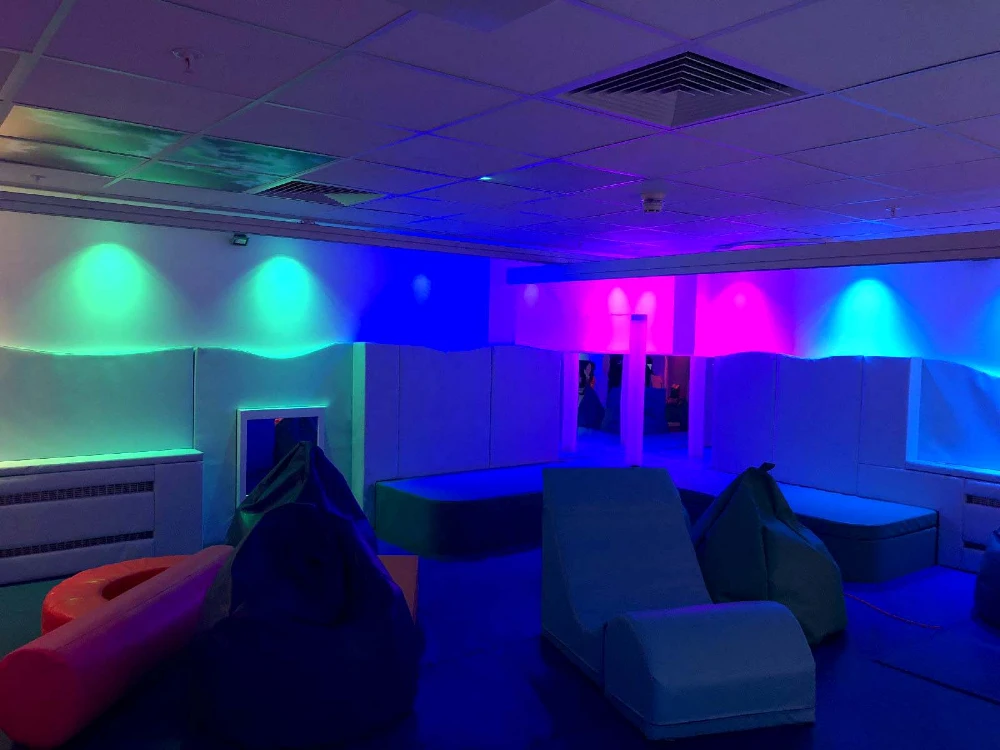
Why Sensory Rooms Are Vital in Social Care
Sensory rooms in social care settings are not just a luxury—they are essential. These spaces provide meaningful support for individuals with a range of needs, including those with dementia, autism, or learning disabilities. By offering a safe and calming environment, sensory rooms help reduce anxiety, improve focus, and foster emotional stability.
Supporting Vulnerable Individuals
Many individuals in social care settings experience heightened sensitivity to their environment or difficulties processing sensory input. Sensory rooms provide a controlled space where they can explore and regulate their senses.
For example, a person with autism might use the room to decompress and reduce sensory overload, while someone with dementia might find comfort in familiar scents and calming visuals.
Managing Anxiety and Agitation
Sensory rooms are particularly effective in helping to manage anxiety and agitation. By incorporating features such as soft lighting, calming sounds, and tactile elements, these spaces create a soothing environment that encourages relaxation.
For individuals prone to episodes of agitation or distress, sensory rooms offer a safe retreat to regain composure.
Enhancing Quality of Life
Beyond immediate benefits, sensory rooms contribute to long-term emotional well-being. Engaging the senses through interactive elements or relaxing features can spark joy, evoke memories, and encourage meaningful interactions. This holistic approach to care significantly enhances the quality of life for residents and service users.
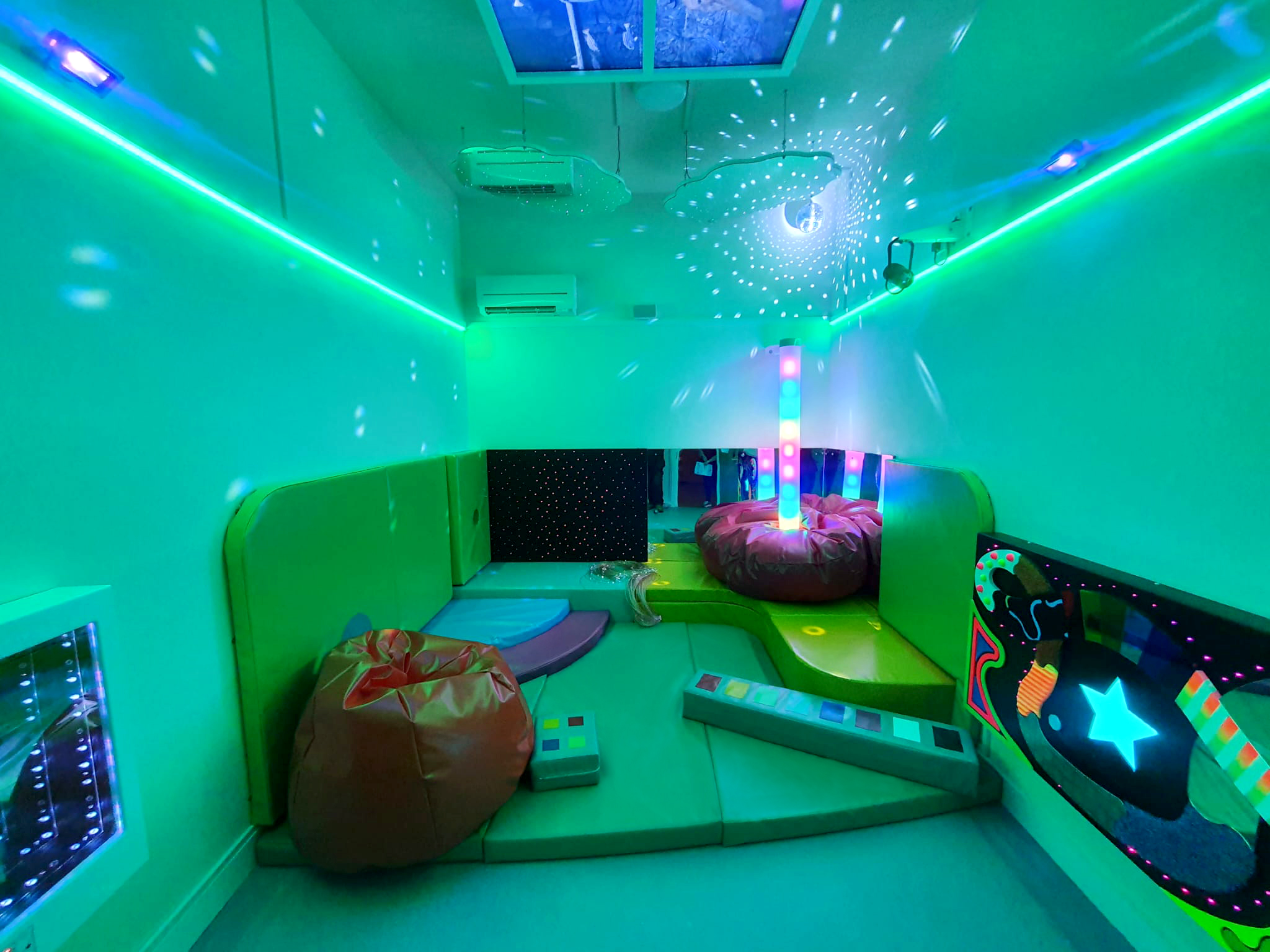
Features of Sensory Rooms for Social Care
Sensory rooms in social care settings are thoughtfully designed to meet the unique needs of their users. Key features include:
- Calming Features: Soft lighting, aromatherapy diffusers, and comfortable seating create a soothing atmosphere. Adjustable lighting allows carers to adapt the space to different moods and needs.
- Interactive Elements: Tactile walls, bubble tubes, and projectors engage users and provide a stimulating experience. These features encourage exploration and curiosity, which are especially beneficial for individuals with cognitive impairments.
- Accessibility: Inclusive design ensures that everyone can benefit from the room. Features such as wheelchair-friendly layouts, adjustable equipment heights, and clear signage make the room welcoming and functional for all.
- Safety Considerations: Non-slip flooring, rounded edges, and easy-to-clean materials ensure the room is secure and hygienic, meeting the high standards required in social care settings.
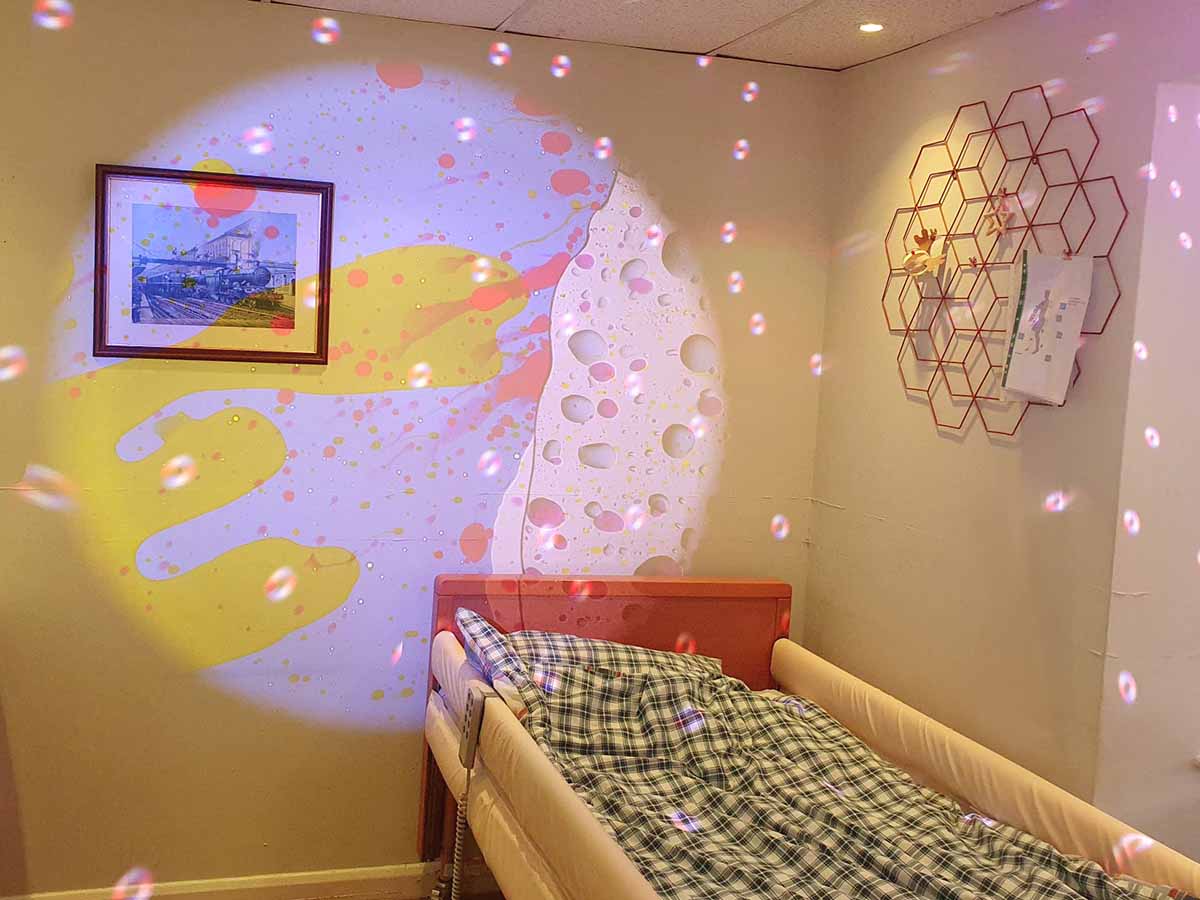
Designing Sensory Rooms for Social Care
Creating a sensory room for social care requires thoughtful planning and collaboration with experts. At Sensory Technology, we specialise in designing tailored sensory environments that meet the unique needs of service users and care settings.
Here are some essential considerations:
- Partner with Sensory Technology: Our team works closely with social care providers to design rooms that are both functional and impactful. By understanding the specific requirements of your facility and users, we ensure every sensory room delivers meaningful benefits. From the initial consultation to installation, we guide you through the process with expertise and care.
- Prioritise Safety: Safety is at the heart of every sensory room we design. We use non-slip flooring, durable materials, and accessible layouts to create secure environments that meet rigorous regulatory standards. Attention to safety ensures the room is suitable for all users, including those with mobility challenges or heightened sensitivities.
- Customise for Your Users: Every social care setting is unique, and so are the needs of its residents or attendees. We customise sensory rooms to suit specific demographics, whether that means incorporating memory-focused features for dementia care or calming elements for individuals with autism. Personalisation ensures the space truly serves its users.
The Sensory Technology Difference
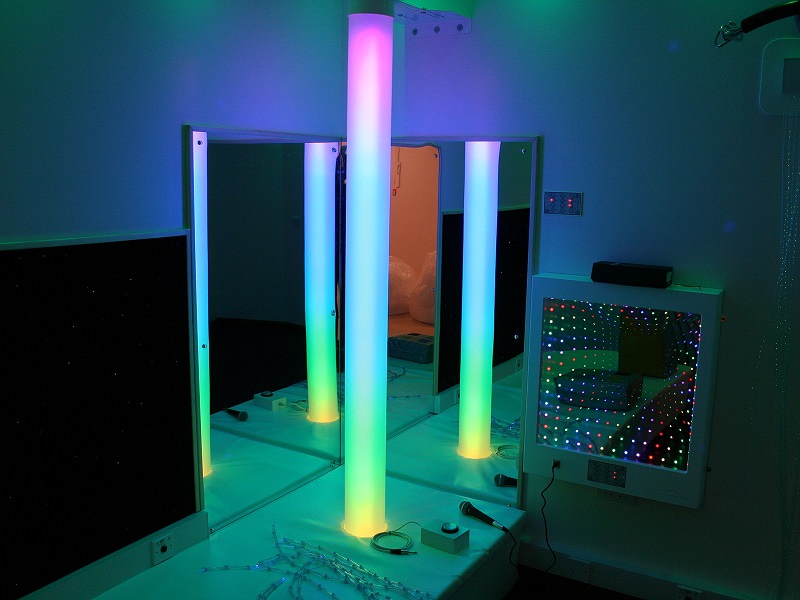
Solutions
Whatever your space or budget, we will create an eye-catching sensory environment
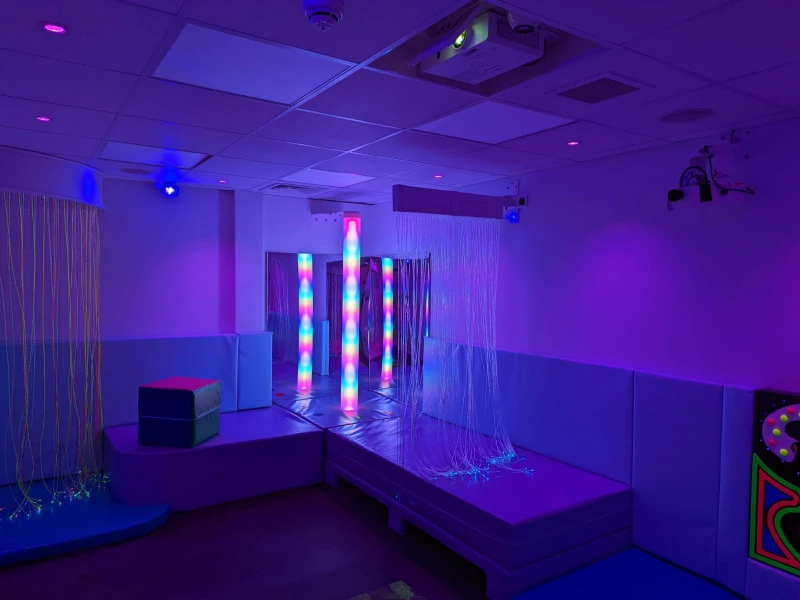
Workmanship
Professionally installed sensory rooms backed by our unrivalled aftercare and support
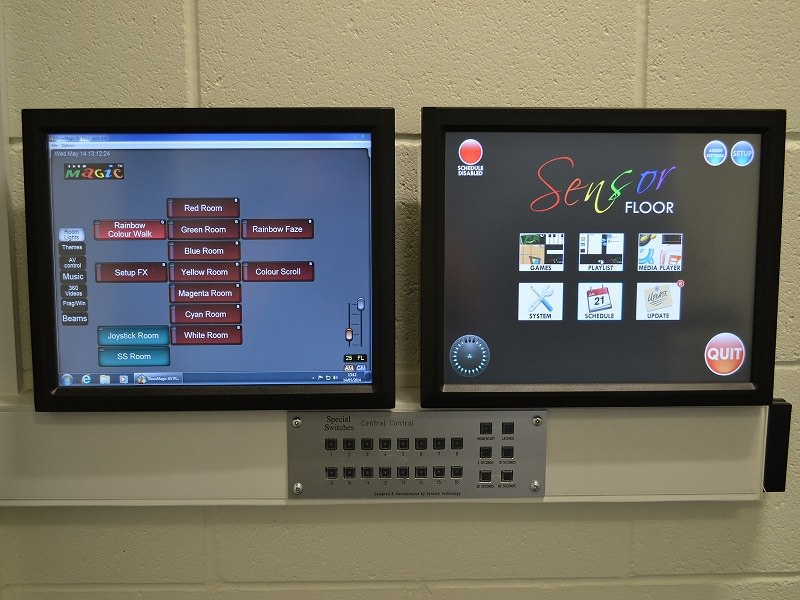
Technology
From simple control through to computer-automated interactive learning experiences
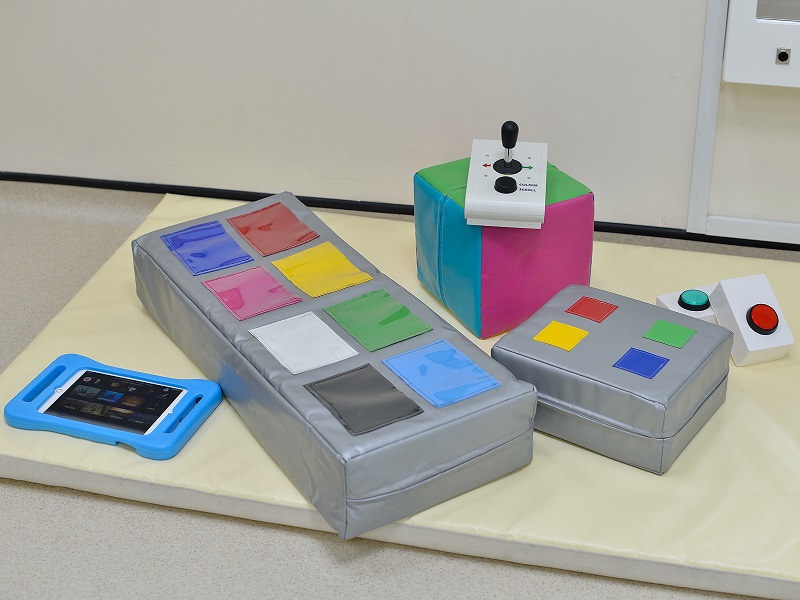
Support
Maintenance friendly equipment for maximum reliability, making the most of your money
Get Your Free Design Today...
Ready to take the next step?
One of our experienced Sensory Advisors will be in touch. Listening to both your requirements and budget, before creating your FREE sensory environment design and proposal.
No Pushy Salespeople and No Obligation.
Frequently Asked Questions
What are the primary benefits of sensory rooms in social care?
Sensory rooms promote emotional well-being, support behavioural management, and enhance the overall quality of life for service users. They also provide caregivers with a valuable tool to deliver personalised and effective care.
How can sensory rooms be tailored for different age groups?
Features can be customised based on the needs and preferences of different age groups. For example, children may benefit from playful interactive elements, while older adults might prefer calming features and memory-focused tools.
Are sensory rooms suitable for individuals with severe disabilities?
Yes, sensory rooms are designed to be inclusive and accessible. With the right features and adjustments, they can provide meaningful support for individuals with severe disabilities, offering comfort, stimulation, and engagement.
How do sensory rooms align with social care regulations and standards?
Sensory rooms are designed to meet the high safety and hygiene standards required in social care settings. They also align with best practices for person-centred care, supporting holistic and inclusive approaches to caregiving.

